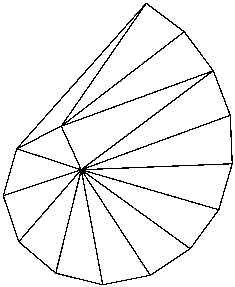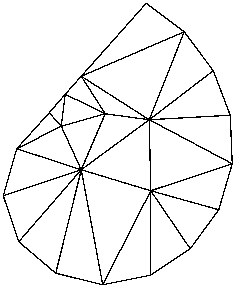Quality meshing: angle and size constraints
Triangle generates a conforming constrained Delaunay triangulation whenever the -q, -a, or -u, switch is used. These switches set constraints on angles and triangle sizes in the mesh.
The -q switch sets a minimum angle constraint. A number may follow the `q'; otherwise, the default minimum angle is twenty degrees. For the vertex set spiral.node below, consider the differences among




Note that the angle constraint does not apply to small angles between input segments; such angles cannot be removed.
The -a switch sets a maximum area constraint. There are three ways to use this switch. The first way is to specify a maximum area on the command line. The next example is a mesh in which no triangle has area greater than 0.2.
The second manner of using the -a switch is applicable only when creating a new mesh from a PSLG. The file describing the PSLG itself contains area constraints, each of which is applied to a segment-bounded region; see the .poly file format for details. For an example, look at the last seven lines of la.poly, which describes a vertical cross section of soil in the Los Angeles Basin. Below is an illustration of the results when the -a switch is or is not invoked.


